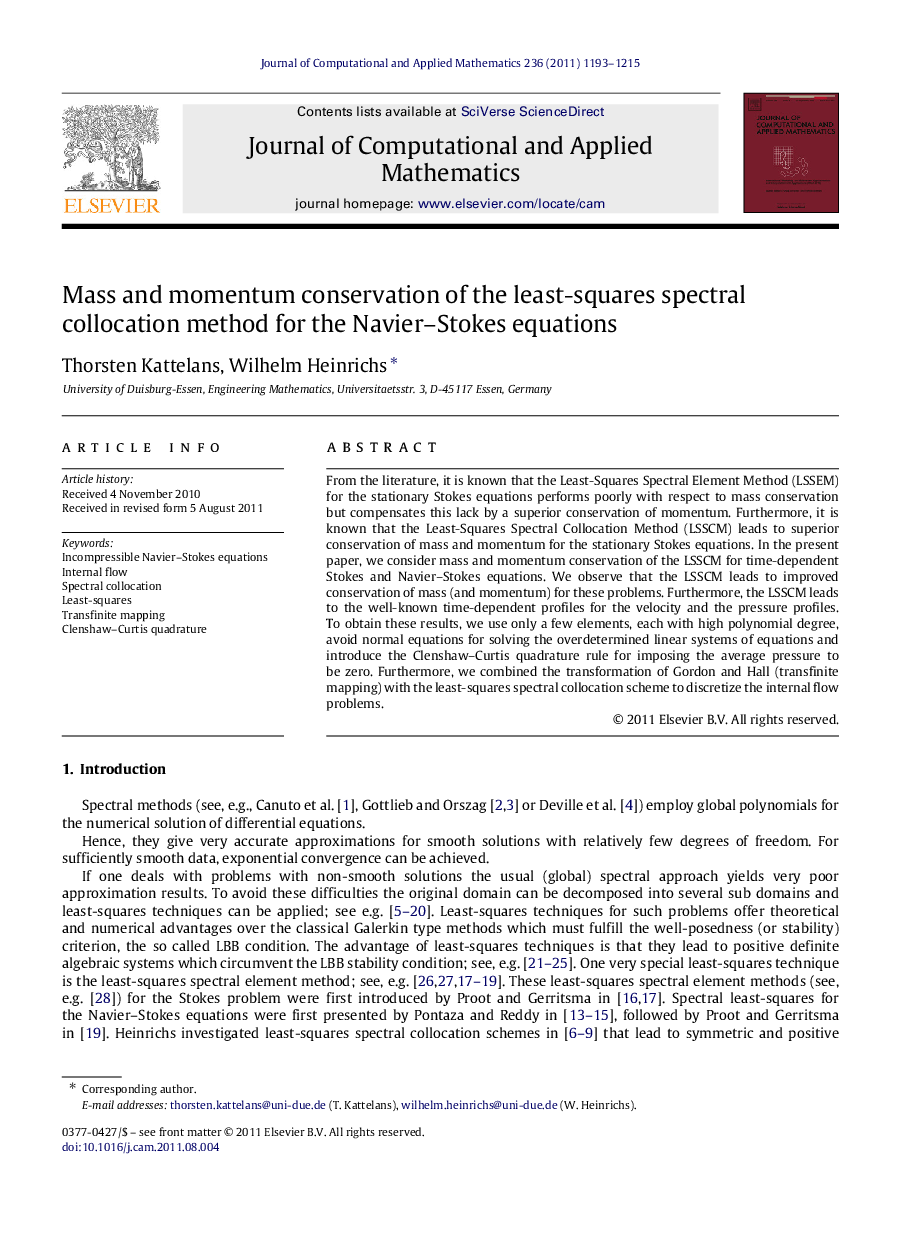| Article ID | Journal | Published Year | Pages | File Type |
|---|---|---|---|---|
| 6423084 | Journal of Computational and Applied Mathematics | 2011 | 23 Pages |
From the literature, it is known that the Least-Squares Spectral Element Method (LSSEM) for the stationary Stokes equations performs poorly with respect to mass conservation but compensates this lack by a superior conservation of momentum. Furthermore, it is known that the Least-Squares Spectral Collocation Method (LSSCM) leads to superior conservation of mass and momentum for the stationary Stokes equations. In the present paper, we consider mass and momentum conservation of the LSSCM for time-dependent Stokes and Navier-Stokes equations. We observe that the LSSCM leads to improved conservation of mass (and momentum) for these problems. Furthermore, the LSSCM leads to the well-known time-dependent profiles for the velocity and the pressure profiles. To obtain these results, we use only a few elements, each with high polynomial degree, avoid normal equations for solving the overdetermined linear systems of equations and introduce the Clenshaw-Curtis quadrature rule for imposing the average pressure to be zero. Furthermore, we combined the transformation of Gordon and Hall (transfinite mapping) with the least-squares spectral collocation scheme to discretize the internal flow problems.
